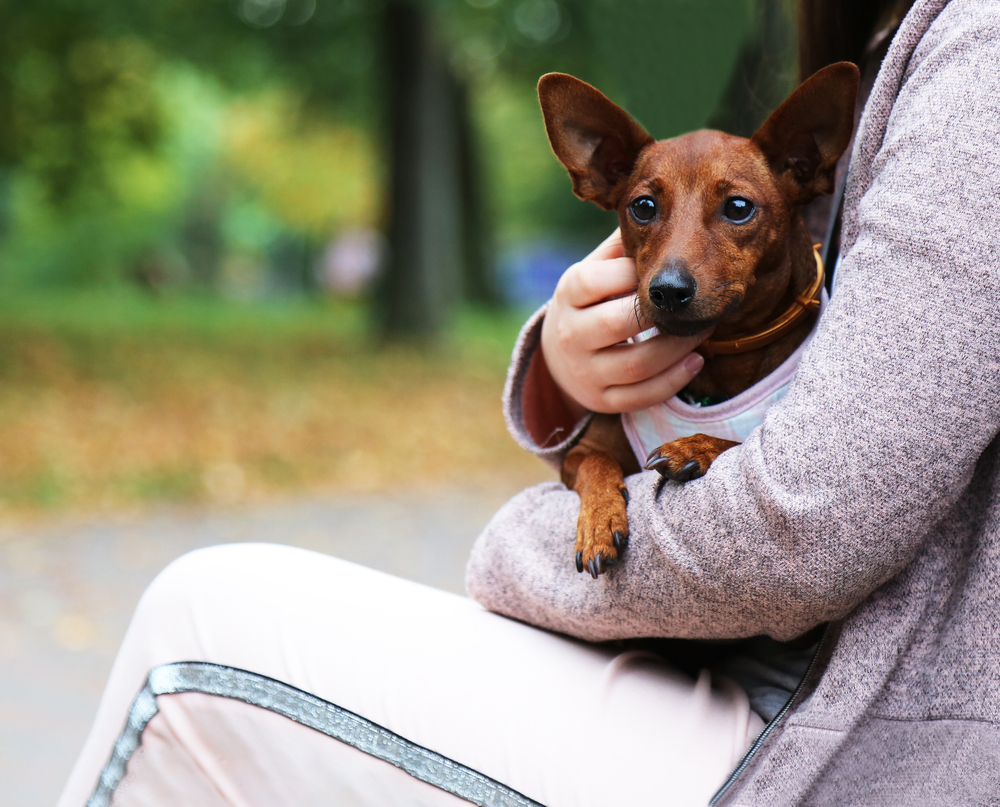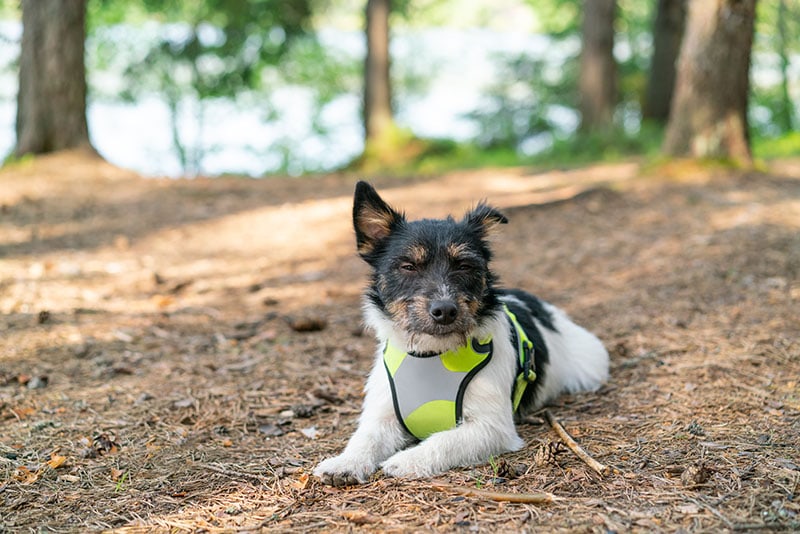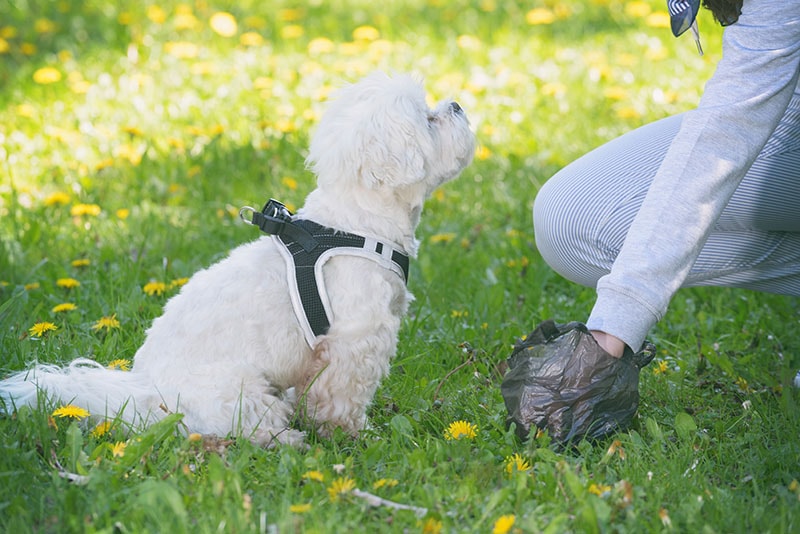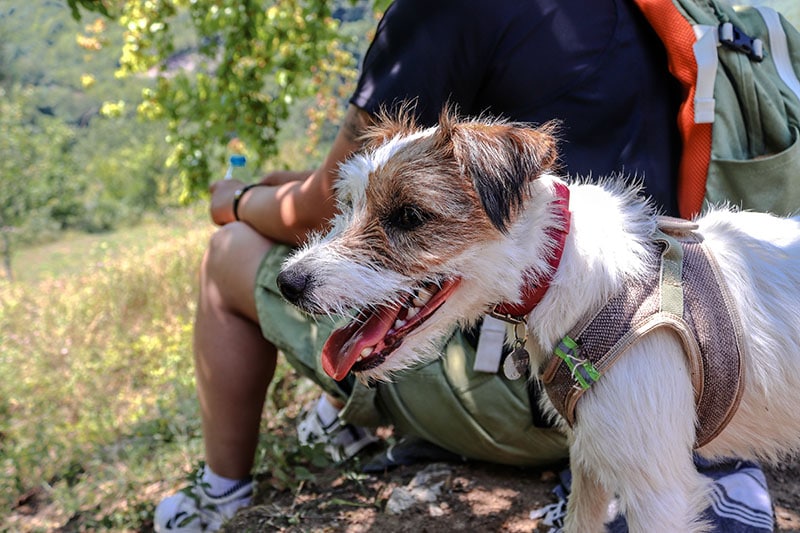Hiking is an excellent opportunity to relax and enjoy nature, and it makes sense that you would want your dog to go on adventures with you. They’re great companions, and it’s inspiring to see little pups enjoy the sounds, smells, and sights of the outdoors.
If you’re the owner of a small dog, you might be uncertain whether to take them on your hikes. But don’t worry! Despite their size, these canines can do just as well as the bigger dogs! However, to ensure a pleasant hike for you and your pet, there are a few things you need to do. These tips for hiking with small dogs will allow you and your pooch to have fun and safer time together.
The 10 Tips for Hiking With Small Dogs
1. Make Sure Your Small Dog Is Suitable for Hiking

Not all dogs make good hiking partners when we look at factors such as breed, size, personality, and age. Small canines that can’t manage strenuous activity shouldn’t go on long and challenging hikes because it is a demanding activity. Some pets may find it difficult to negotiate steep and uneven terrain, so don’t bring along animals that aren’t suitable for longer walks. Of course, short, easy hikes are great for small pooches too.
But many small and active dog breeds can accompany you on outdoor adventures, dog breeds such as the Miniature Pinscher, Beagle, West Highland White Terrier, Yorkie, Chihuahua, Jack Russell Terrier, and others can accompany you on outdoor adventures.
2. Prepare Your Pet
Start slowly when hiking with your little dog. Taking them on shorter walks in the neighborhood or at a nearby park is an excellent way to make them fit for hiking and get them prepared. Once your dog is comfortable, you can gradually increase the difficulty and duration of the hike.
Each breed is unique, and factors such as age and temperament also play a role. To avoid pushing your dog past their limits, pay attention to how they’re walking. Because you know your beloved animal better than anyone, you can tell if they are having difficulties.
3. Keep Them on a Leash

It’s tempting to allow your small dog to run free. Even in places where leashes are optional, it can still be risky, especially for small dogs. Compared to large-breed canines, little dogs are more vulnerable to predatory animals like coyotes, wild or feral cats, and even large birds of prey. But they will rarely get lost and won’t be at the mercy of predators if you keep them on a leash.
Furthermore, it’s also polite to do so. It may surprise you that not everyone enjoys interacting with your adorable pet, even fellow dog owners!
4. Pick the Proper Equipment
Having the correct equipment will make the journey more enjoyable for both you and your furry friend because smaller pups frequently require more assistance during hiking. Ensure your dog is wearing a sturdy harness, particularly one with a handle on the back, which will provide you leverage to help them more effectively navigate obstacles. In addition to being comfortable, a harness will prevent them from slipping their heads out of a collar and will be more secure.
You might also need a jacket in cooler weather. While for hot temperatures, you may want a cooling vest or harness core cooler insert. Make sure your dog has a comfortable travel bed or sleeping pad to rest on after a hard day of hiking if you’ve got plans for camping or a multiday trip.
5. Bring Water

This is possibly the most crucial dog hiking tip of all! Being unable to sweat like humans puts dogs at a higher risk of overheating and dehydration. But they shouldn’t drink from a stream or any other potentially contaminated water sources, so it’s best to have fresh water and prepare a collapsible water dish in advance.
6. Have a Lot of Food With You
You may burn a significant number of calories when you trek. Therefore, bring more snacks to keep your energy level high and avoid hunger. The same applies to your small dog. They need to refuel with food and snacks because their little feet are working hard on the trail. Depending on how long your hike adventure will be, it’s best to have a pack of treats or even some of your dog’s food on hand. When you stop for a snack, your dog can also eat energy-boosting treats.
7. Allow Your Dog to Rest Frequently

Keep in mind that dogs can suffer from heatstroke on hot days. When you stop periodically along the trail, you should give your pet water and snacks. Avoid feeding them a full meal shortly before or immediately after hiking to prevent them from getting sick. Give them food at least 1 hour before or 30 minutes after.
Maintaining dog safety near water sources is crucial. Don’t let your dog drink or swim in contaminated water because it could get them sick from deadly parasites or algae. As previously mentioned, bring along a portable water purifier or bottled water if you hike in isolated locations without access to fresh, safe water.
8. Stick to the Trails
Dog walkers and hikers should follow paths and make minimal noise. Do not create new trails, take shortcuts, or cut switchbacks. This will help keep you and your pooch as safe as possible. Encounters with spiders, snakes, or other potentially dangerous creatures are more likely if you are bushwhacking.
9. Take Care of Your Dog’s Waste and Respect the Hiking Area

Taking care of the environment and your fellow hikers starts with picking up after your dog on hiking paths. You can either use trash cans to dispose of pet waste or prepare a sealed container to bring all the waste back home for proper disposal. There are some routes that provide biodegradable dog waste bags, but your best bet is to be prepared and purchase them in advance at a pet supply store.
10. Make Sure Your Pet Is Wearing Tags
Having tags for your dog will make it easier for you to be reunited with them if another hiker finds them in the unusual event that you and your pet become separated. In addition to tags, microchipping your dog is always a wise idea and will make it quicker for shelters, rescues, or clinics to safely return them to you.
Final Thoughts
A very satisfying experience and one that creates lasting memories is spending time in the great outdoors with your beloved animal. The only caveat is to be extra careful and prepared because getting your dog to the vet in the event of an accident in the wild can take longer than usual.
You are responsible for being familiar with the regulations at each location where you take your pup before you set out on the trail. There are general pet policies in place for National Parks, but every park may also have specific laws of its own. There are also detailed rules for other wilderness areas, including state parks and local forests.
Related Reads:
Featured Image Credit: Victoria Smolina, Shutterstock
Contents
- The 10 Tips for Hiking With Small Dogs
- 1. Make Sure Your Small Dog Is Suitable for Hiking
- 2. Prepare Your Pet
- 3. Keep Them on a Leash
- 4. Pick the Proper Equipment
- 5. Bring Water
- 6. Have a Lot of Food With You
- 7. Allow Your Dog to Rest Frequently
- 8. Stick to the Trails
- 9. Take Care of Your Dog’s Waste and Respect the Hiking Area
- 10. Make Sure Your Pet Is Wearing Tags
- Final Thoughts











